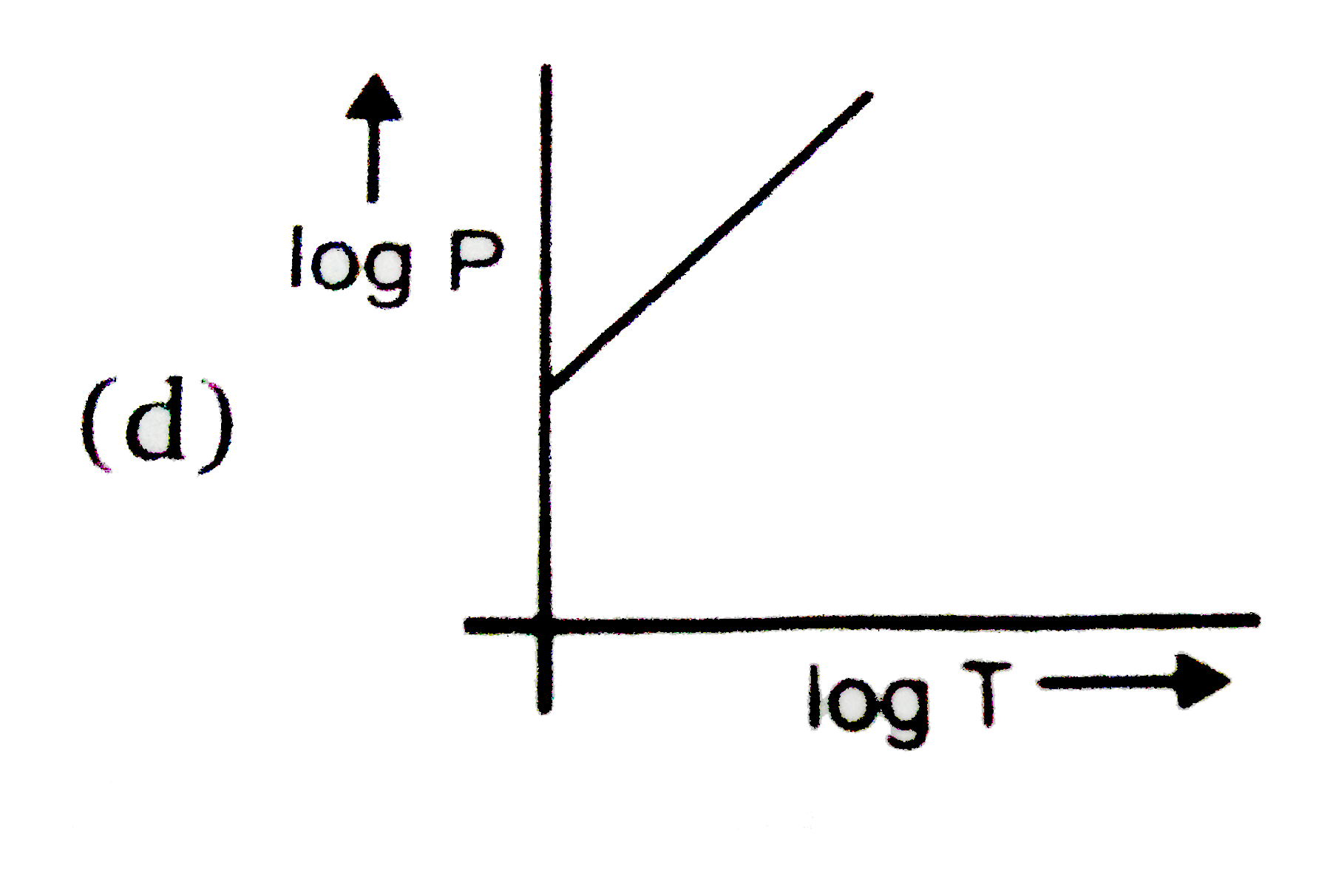Which of the following curve does not represent Gay-Iusacc's law?




The correct Answer is:a
To solve the question "Which of the following curve does not represent Gay-Lussac's law?", we will follow these steps:
Step 1: Understand Gay-Lussac's Law
Gay-Lussac's law states that the pressure of a gas is directly proportional to its absolute temperature when the volume is held constant. This can be mathematically expressed as:
P∝T
or
P=kT
where k is a constant.
Step 2: Identify the Variables
In the context of Gay-Lussac's law:
- Pressure (P) is on the y-axis.
- Temperature (T) is on the x-axis.
- The relationship is linear, meaning if we plot P against T, we should get a straight line that passes through the origin (0,0) if T is in Kelvin.
Step 3: Analyze the Options
We need to analyze the provided curves (options A, B, C, etc.) to see which one does not represent the linear relationship described by Gay-Lussac's law.
1. Option A: If this curve represents temperature in Celsius instead of Kelvin, it will not pass through the origin because the relationship would be shifted. The equation would become:
P=k(T+273)
This means the line would have a y-intercept, indicating that it does not represent Gay-Lussac's law correctly.
2. Option B: If this curve shows a linear relationship with a positive slope and passes through the origin, it correctly represents Gay-Lussac's law.
3. Option C: Similar to option B, if this curve is linear and passes through the origin, it also represents Gay-Lussac's law correctly.
Step 4: Conclusion
Based on the analysis, the curve that does not represent Gay-Lussac's law is Option A, as it does not pass through the origin when temperature is in Celsius.
Final Answer
The curve that does not represent Gay-Lussac's law is Option A.
---
Gay-Lussac's law states that the pressure of a gas is directly proportional to its absolute temperature when the volume is held constant. This can be mathematically expressed as:
P∝T
or
P=kT
where k is a constant.
In the context of Gay-Lussac's law:
- Pressure (P) is on the y-axis.
- Temperature (T) is on the x-axis.
- The relationship is linear, meaning if we plot P against T, we should get a straight line that passes through the origin (0,0) if T is in Kelvin.
We need to analyze the provided curves (options A, B, C, etc.) to see which one does not represent the linear relationship described by Gay-Lussac's law.
P=k(T+273)
This means the line would have a y-intercept, indicating that it does not represent Gay-Lussac's law correctly.
Based on the analysis, the curve that does not represent Gay-Lussac's law is Option A, as it does not pass through the origin when temperature is in Celsius.
The curve that does not represent Gay-Lussac's law is Option A.
Topper's Solved these Questions
- GASEOUS STATEBOOK - NARENDRA AWASTHI ENGLISHCHAPTER - GASEOUS STATEEXERCISE - Level 2
30 Videos
- GASEOUS STATEBOOK - NARENDRA AWASTHI ENGLISHCHAPTER - GASEOUS STATEEXERCISE - Level 3 Passage 1
4 Videos
- ELECTROCHEMISTRYBOOK - NARENDRA AWASTHI ENGLISHCHAPTER - ELECTROCHEMISTRYEXERCISE - Subjective problems
14 Videos
- IONIC EEQUILIBRIUMBOOK - NARENDRA AWASTHI ENGLISHCHAPTER - IONIC EEQUILIBRIUMEXERCISE - Subjective problems
1 Videos
Similar Questions
Knowledge Check
Which of the following does not represent a travelling wave
Ay=f(x−vt)By=ymsink(x+vt)Cy=ymlog(x−vt)Dy=f(x2−vt2)
Which of the following group does not represent monocot
View SolutionWhich curve does not represent Boyl's law ?
View SolutionWhich of the following plots does not represent Boyle's law?
View SolutionWhich of the following does not represent redox reaction?
View SolutionWhich of the following pair does not represent greenhouse gases ?
View SolutionWhich of the following curves represent(s) Boyle's law?
View SolutionWhich of the following curves does not represent motion in one dimensions?
View Solution
